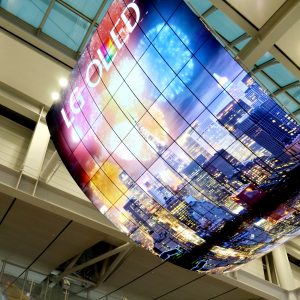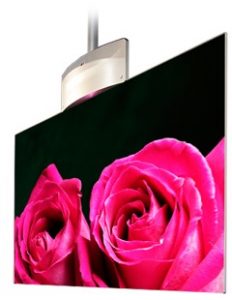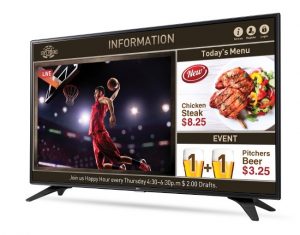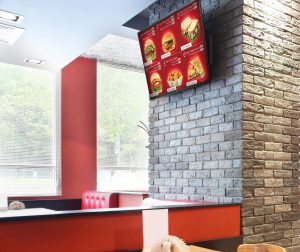
LYLE BUNN
Digital Media Strategy Architect, BUNN
Lyle@LyleBunn.com
Lyle Bunn is an independent analyst, advisor and educator providing digital place-based signage expertise to end users in the planning, design, sourcing and optimization of their initiatives. He has published more than 300 articles, whitepapers and “how to” guides and helped to train over 10,000 end user and supply professionals. See www.LyleBunn.com.
The cliché, catch all phrase “big data” has confounding marketers who ask, “where do I start” and “what do I do with it”. Everyone in the marketing supply chain should be aware of the value that they bring to this dilemma and opportunity.
For digital signage providers and end users, the digital-ness of digital place-based media offers some immediate and high value answers when systems are organized to capture and apply insights.
Insights are the result of using data in all its levels of abstraction from data to statistics to information to knowledge to wisdom.
As will be presented in a July webinar hosted by BUNN, each level of data can contribute to the communications goal supporting both capture and exploitation.
Data results from transactions. An inherent value of digital signage is that it is always working to be causal in transaction generation in the form of purchase requests and enquiries and in leading the consumer down the path to purchase.
The “muscles” of digital signage are flexed further toward intended outcomes when cause and effect are the basis of message presentation.
Think of a quick serve restaurant (QSR) drive-thru in which the digital order confirmation board is used to suggest menu options. Order data related to time of day, weather conditions, number in the drive-thru party or a revisiting patron provide data per transaction which when reflecting multiple transaction are statistics and provide information that can be used to predict probable future transactions.
In that same drive-thru, the suggestions of different menu items that can augment the patron order offer additional insights, which when applied in future can change the transaction pattern.
This allows the QSR to move from message presentation to applying a prescription of suggested items relative to the order, and then to a predictive model of menu suggestion. The result in each case is higher revenue and margin per transaction.
“I never guess. It is a capital mistake to theorize before one has data. Insensibly one begins to twist facts to suit theories, instead of theories to suit facts,” notes Sir Arthur Conan Doyle, Author of Sherlock Holmes stories. Dr. Holmes knew about the application of data.
Facts have a transformative influence on business. Truth, as reflected and supported by fact, are the basis of modern commerce.
This transformation in business began in the “management by objectives (MBO)” movement of the 60’s, and computational power that began on the 70’s led rapidly to Enterprise Resource Planning (ERP) which sought to align resources with priorities. Operational efficiencies in back office functions such as improved inventory awareness, point of sale and supply chain management spawned automated management based on business rules with attention paid to exceptions.
Most enterprises now have adequate back office systems. The insights model of data levels of abstraction has transformed business operations.
Through this, marketing has shifted slowly from being primarily a creative exercise into the rule-base science of revenue and profit-delivering efficiency.
Marketers believe intrinsically that they are creating a new reality for their product, service or enterprise. This creativity is manifested in jingles, tag lines and icons drummed into consumers with huge advertising budgets. It was the age of Mad Men.
Every marketer, C-Suite and investor begged duplication of the past branding successes of “a little dab’ll do ya”, Kodak-moments and the Rice Crispie Kids. Madison avenue asks for, and get, the money.
As the internet of the 90’s began to transform marketing through increased access to information and the e-commerce and mobile commerce, and social media that have followed, agencies have simply added these arrows to their quiver of billable services.
Through this, brands and retailers have focused on gaining return on bricks and mortar investment, most recently adding “owned” media, such as place-based digital signage to “paid” media investment.
Now, digital signage has become essential to activating revenues. The traffic that is delivered to the premises by “paid” media is activated by the on-site digital signage that is “owned” by the enterprise.
Analytics associated with on-location digital signage use, are the transformative influence on the modern and growing business.
 On this July 4th weekend as we celebrate America’s independence, we can’t help but think about the incredible fireworks shows that will be sparkling skies across the USA. And we want to do it justice with our own celebrations too—ever watch the Macy’s fireworks on an LG video wall? Add a great sound system with rocking subwoofers and it’s one spectacular experience! Now just wait until you see it on our new OLED products. More great things are coming soon.
On this July 4th weekend as we celebrate America’s independence, we can’t help but think about the incredible fireworks shows that will be sparkling skies across the USA. And we want to do it justice with our own celebrations too—ever watch the Macy’s fireworks on an LG video wall? Add a great sound system with rocking subwoofers and it’s one spectacular experience! Now just wait until you see it on our new OLED products. More great things are coming soon. On the final day of InfoComm 2016, an on-site panel of AV professionals has selected LG Electronics Dual-View Flat OLED Display and Dual-View Curved Tiling OLED Display as winners of the InfoComm Best of Show Awards for digital signage. The award recognizes new and outstanding products exhibited at InfoComm 2016—the largest, most exciting event in the Western Hemisphere focused on the pro-AV industry, with more than 1,000 exhibitors, thousands of products, and 40,000 attendees from 110+ countries.
On the final day of InfoComm 2016, an on-site panel of AV professionals has selected LG Electronics Dual-View Flat OLED Display and Dual-View Curved Tiling OLED Display as winners of the InfoComm Best of Show Awards for digital signage. The award recognizes new and outstanding products exhibited at InfoComm 2016—the largest, most exciting event in the Western Hemisphere focused on the pro-AV industry, with more than 1,000 exhibitors, thousands of products, and 40,000 attendees from 110+ countries.

